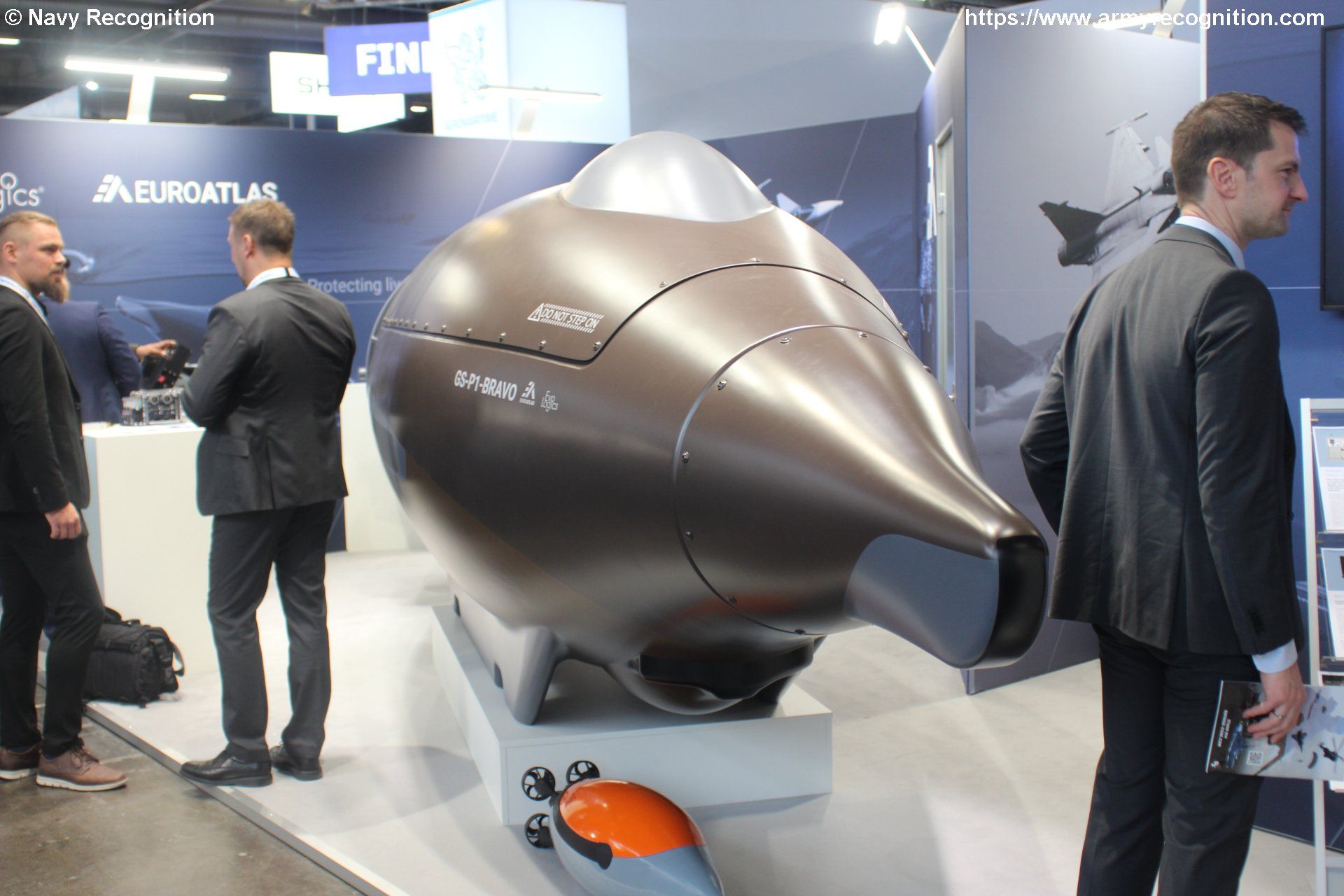Breaking News
Euronaval 2024: Meet Greyshark Euroatlas Autonomous Underwater Vehicle.
At Euronaval 2024, Euroatlas introduced its latest innovation in underwater defense, the Greyshark Autonomous Underwater Vehicle (AUV). The Greyshark, designed to enhance maritime security and surveillance, is a highly versatile AUV equipped for extensive mission adaptability.
Follow Army Recognition on Google News at this link

The Greyshark Autonomous Underwater Vehicle. (Picture source: Army Recognition)
Key features include advanced sensors, including multibeam and synthetic aperture sonar, LIDAR, and an AI-powered camera system, which enable Greyshark to perform precise detection, tracking, and identification tasks even in challenging underwater environments.
The Greyshark is particularly notable for its autonomous capabilities, allowing it to execute long-range missions without direct oversight. This includes port-to-port transits, over-the-horizon reconnaissance, mine warfare operations, and critical infrastructure monitoring. Built for blue and brown water operations, the Greyshark can act in concert with multiple units through swarm behavior, providing expanded sensor coverage and tactical flexibility.
Euroatlas has emphasized the vehicle's seamless integration into existing battle management systems, with live data connectivity ensuring real-time situational awareness. This capability allows Greyshark to support both defensive and offensive operations, including channel clearing, target illumination, and deterrence through presence and identification.
The Greyshark's specifications highlight its robustness, with a depth rating of 650 meters (extendable to 4000 meters) and an operational range of 1100 nautical miles at a cruising speed of 10 knots. Measuring 6.5 meters in length, the AUV's design incorporates a silent electric propulsion system and a low sonar signature, making it an invaluable asset for future unmanned underwater defense strategies.
Autonomous Underwater Vehicles
European Autonomous Underwater Vehicles (AUVs) play a pivotal role in diverse fields, from scientific exploration to strategic defense. In recent years, European initiatives have prioritized advancements in AUV technology, spurred by a growing need for autonomous systems capable of operating in challenging underwater environments.
Key European AUVs, such as Germany’s AUV Abyss, developed by GEOMAR Helmholtz Centre for Ocean Research Kiel, are instrumental in deep-sea mapping and data collection. Operating at extreme depths, these vehicles advance our understanding of oceanic environments and the seafloor’s geological characteristics. In the UK, Autonomous Robotics Ltd is deploying AUVs with specialized sensors for seabed seismic surveys, marking a shift towards more efficient methods of resource exploration. SEA-KIT International’s USV Maxlimer, another UK innovation, serves offshore industries by deploying and recovering underwater vehicles, showcasing the versatility of AUV systems in commercial operations.
Collaborative projects such as the EU-funded SWARMs initiative aim to enhance AUV interoperability with remotely operated vehicles (ROVs), fostering a new level of cooperation in complex maritime missions. Similarly, the European Defence Agency’s SALSA project advances underwater network communications, crucial for the seamless integration of AUVs in defense-related scenarios. These collaborations underscore Europe’s commitment to staying at the forefront of autonomous underwater technology, where expertise and shared resources are enhancing the reliability, adaptability, and operational range of AUVs.


























